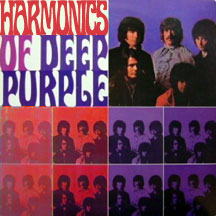Monday 23 January, 2012, 04:09 - Spectrum Management
Posted by Administrator
Over the years, Wireless Waffle has tried to explain and demystify many of the more esoteric technical terms and concepts used in the wireless world such as OFDM, intermodulation and even interpreting ionograms. There is one very straightforward technical concept that is so often misused that it's time the record is set straight. That concept is harmonics.Posted by Administrator
Harmonics should be the easiest concept to understand. Passing any radio (or for that matter audio) signal through anything that is not perfectly linear (and the only things that are perfectly linear are pieces of wire) will produce differing degrees of harmonics. The non-linear device will produce other things as well (such as the aforementioned intermodulation) but harmonics are probably the number one resultant.
A harmonic is simply a copy of the original signal but with it's frequency multiplied by an integer. The second harmonic is therefore the original signal but with all it's frequencies doubled.
- The second harmonic of 1 MHz is at 2 MHz;
- the second harmonic of 10 MHz is at 20 MHz;
- the second harmonic of 150 MHz is 300 MHz;
 Musicians will recognise the second harmonic as being an octive. The third harmonic is simliary the original frequency, but tripled. The third harmonic of 1 MHz is 3 MHz, and so forth. The n-th harmonic is the original frequency multiplied by 'n' so the 273rd harmonic of 2 MHz is... 546 MHz. You can even play the game with light (just about) as the second harmonic of deep red (almost infra-red) is deep purple (ultra-violet) which probably explains why so many wannabe rock groups use devices such as 'harmonisers' and 'harmonic sweetners'. The only rule is that 'n' has to be an integer. There is no such thing as the 'second and a halfth' harmonic, and this seems to be where the confusion arises.
Musicians will recognise the second harmonic as being an octive. The third harmonic is simliary the original frequency, but tripled. The third harmonic of 1 MHz is 3 MHz, and so forth. The n-th harmonic is the original frequency multiplied by 'n' so the 273rd harmonic of 2 MHz is... 546 MHz. You can even play the game with light (just about) as the second harmonic of deep red (almost infra-red) is deep purple (ultra-violet) which probably explains why so many wannabe rock groups use devices such as 'harmonisers' and 'harmonic sweetners'. The only rule is that 'n' has to be an integer. There is no such thing as the 'second and a halfth' harmonic, and this seems to be where the confusion arises.As harmonics are so common, much effort is made to ensure that transmitters are filtered to remove them. A low pass filter is one which allows lower frequencies through but attenuates higher ones and is almost universally tacked onto the output of any transmitter. You would not want a high power TV transmitter on 534 MHz (UHF channel 29 in Europe) radiating strong signals at its second harmonic frequency of 1068 MHz, in the middle of the aeronautical safety band, any more than you would want an aeronautical system at 1068 MHz radiating at 2136 MHz and causing interference to 3G base stations!
 So often, you will see spurious emissions from a transmitter being called 'harmonics'. Unless those emissions are on direct multiples of the main transmitter frequency they are not harmonics, but will either be intermodulation or could be caused by the transmitter squegging. Either way, the term harmonics seems to have been awarded a new meaning to encompass all spurious emissions from a transmitter. As a Wireless Waffle reader, now that you know different, any violations of use will be punished strictly and severely.
So often, you will see spurious emissions from a transmitter being called 'harmonics'. Unless those emissions are on direct multiples of the main transmitter frequency they are not harmonics, but will either be intermodulation or could be caused by the transmitter squegging. Either way, the term harmonics seems to have been awarded a new meaning to encompass all spurious emissions from a transmitter. As a Wireless Waffle reader, now that you know different, any violations of use will be punished strictly and severely.For completeness, it is worth pointing out that there are (very rarely) such things as sub-harmonics. These occur on frequencies that are integer multiples of integer fractions of the original frequency. As an example, a problem was reported by the operator of a private mobile radio system on 72.45 MHz of breakthrough from a co-sited FM broadcast station on 96.6 MHz. 72.45 is precisely three-quarters of 96.6. This rare problem was caused by the synthesiser in the transmitter which had an oscillator on 96.6 MHz which was fed into a pre-scalar that divided the signal by 4, producing an output at 24.15 MHz. This signal was rich in harmonics and due to the shoddy design of the transmitter, the third harmonic of this signal was being fed into the transmit amplifiers and appearing at the antenna output - nasty! An additional filter on the output of the FM transmitter cured the problem. It's perhaps no surprise that the company that made the transmitter in question (who won't be identified) is no-longer manufacturing them!
add comment
( 2280 views )
| permalink
| 



 ( 3 / 138485 )
( 3 / 138485 )




 ( 3 / 138485 )
( 3 / 138485 )

